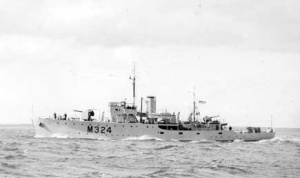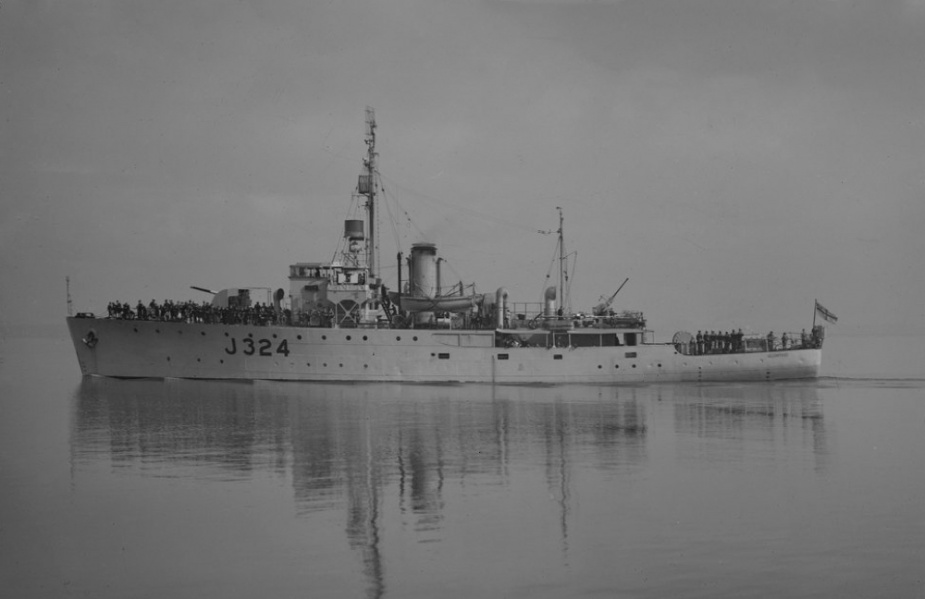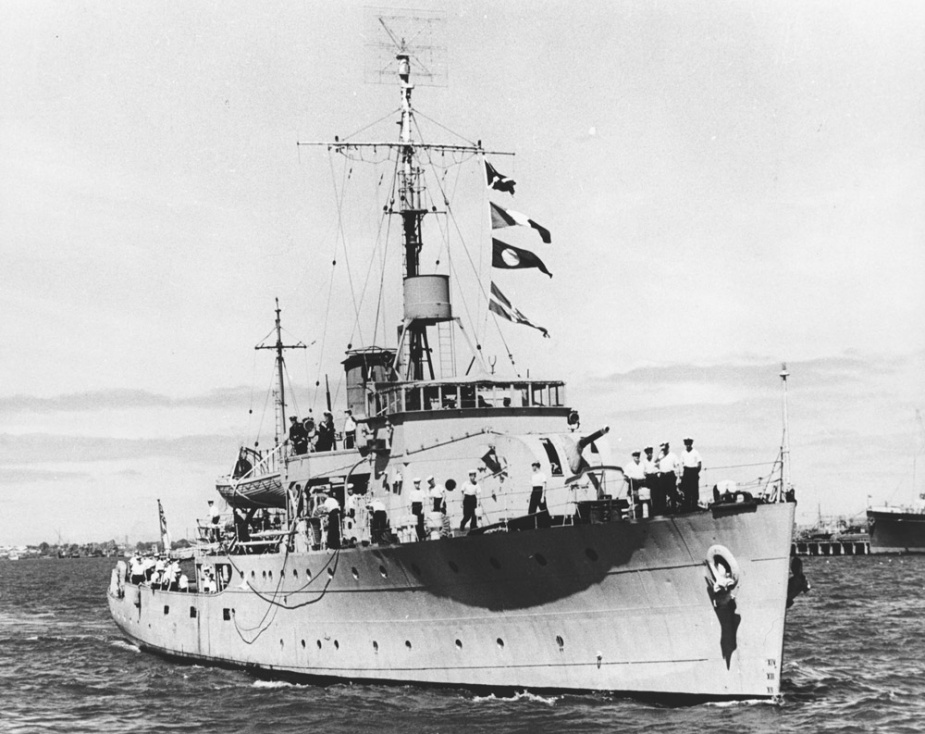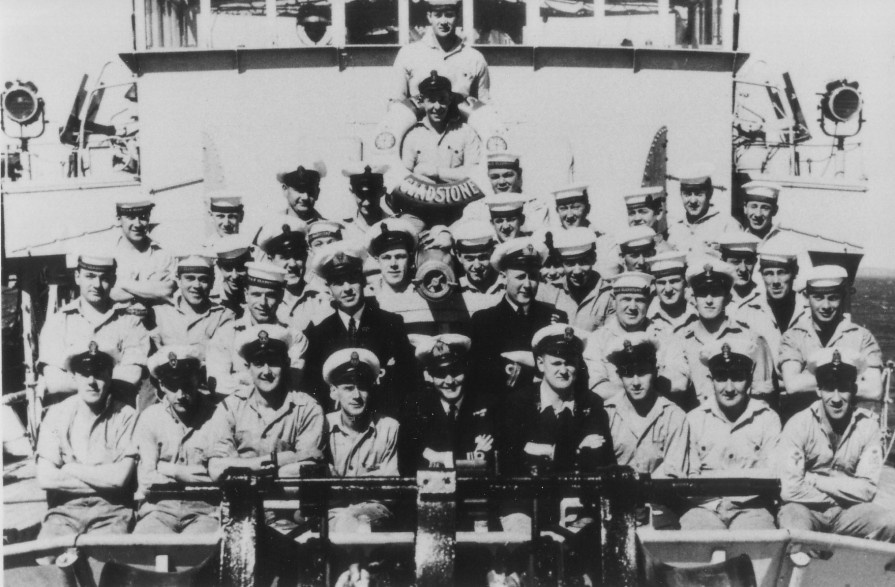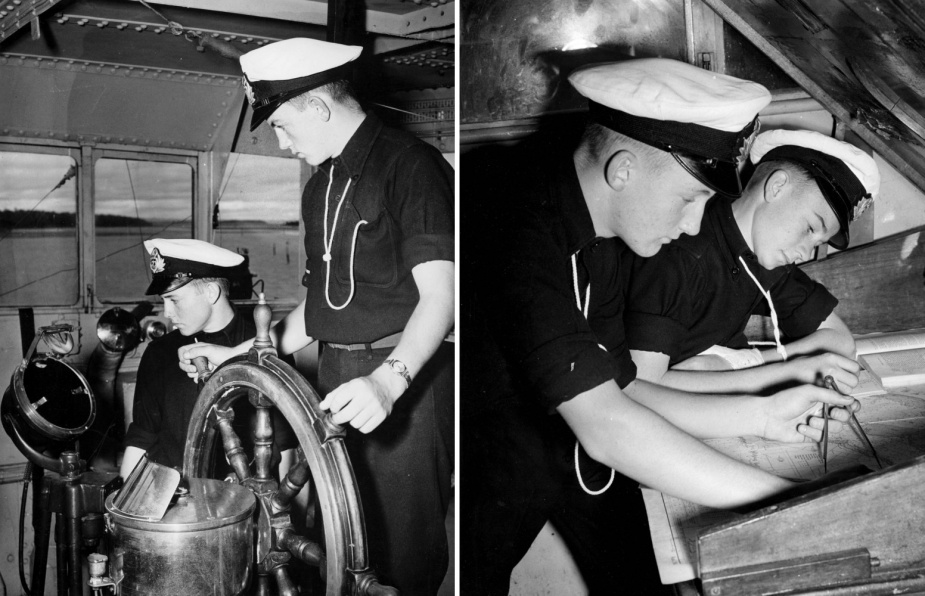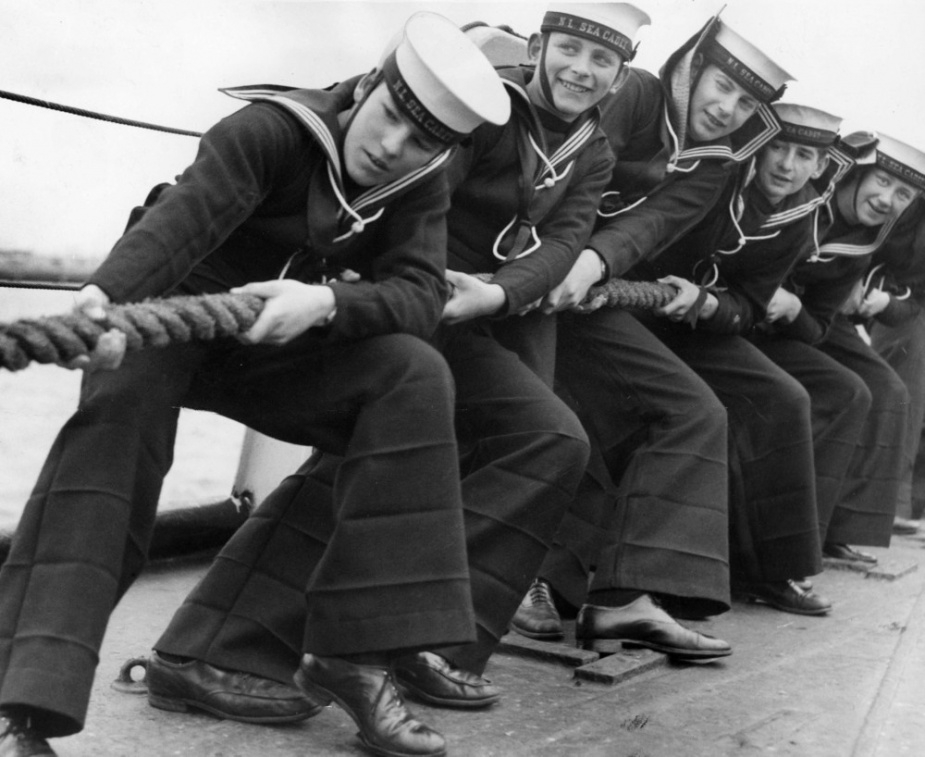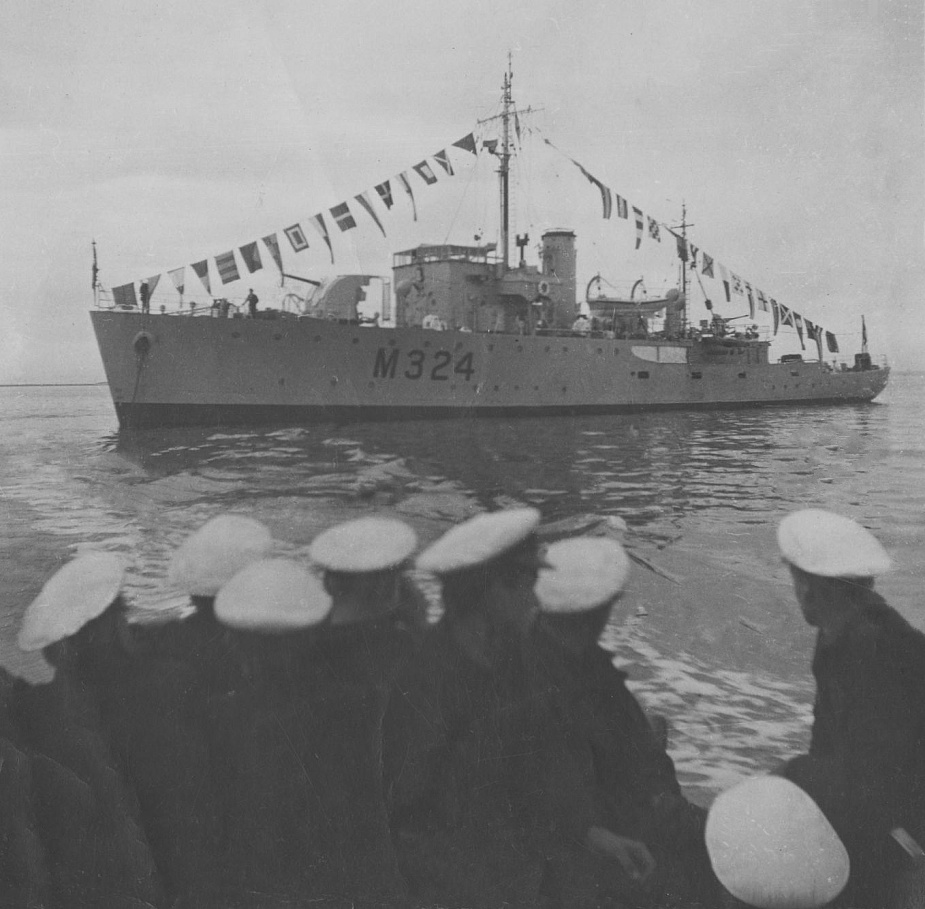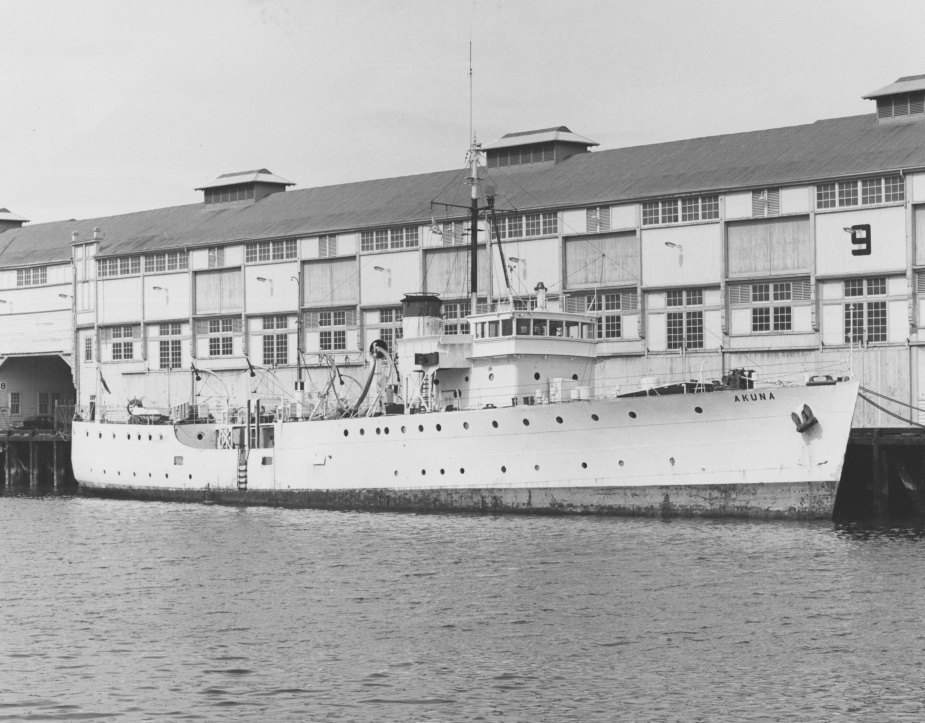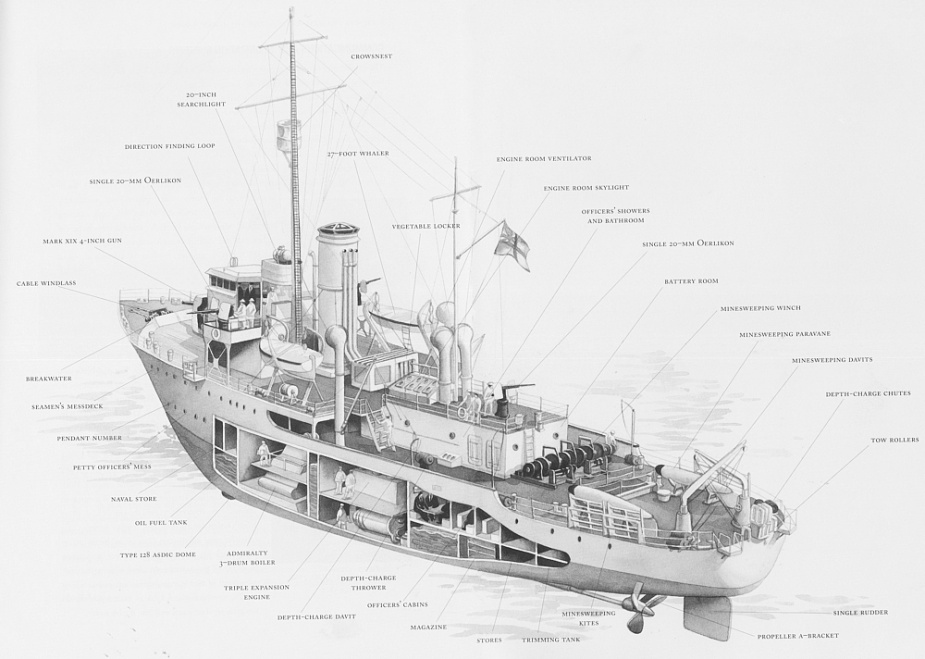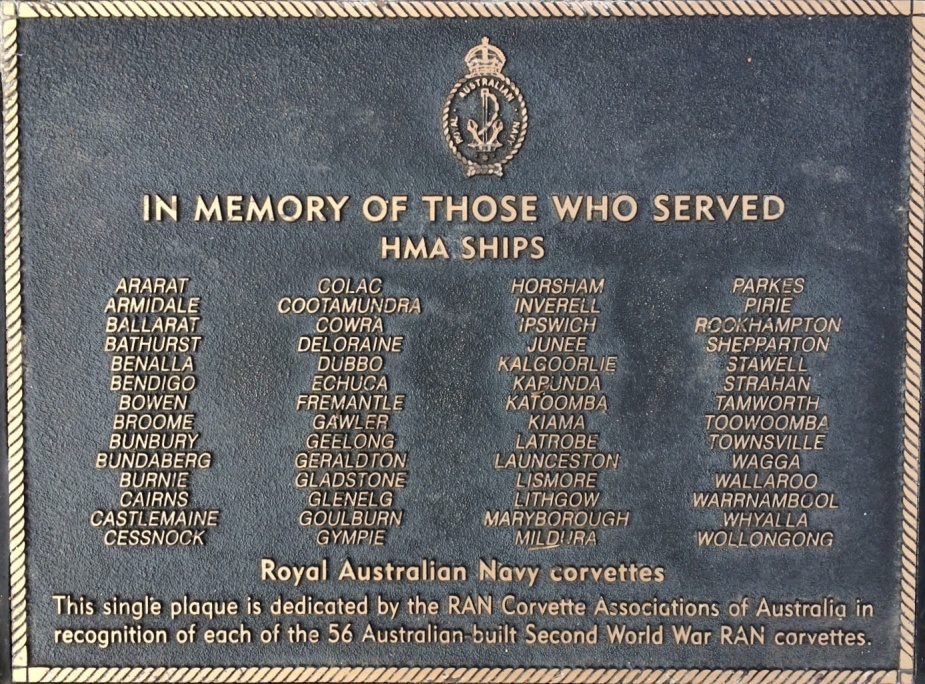HMAS Gladstone (I)
| Class |
Bathurst Class |
|---|---|
| Type |
Australian Minesweeper |
| Pennant |
J324, M324 |
| Builder |
Walkers Ltd, Maryborough |
| Laid Down |
4 August 1942 |
| Launched |
26 November 1942 |
| Launched by |
Mrs Watson, wife of a long time employee of Walkers Ltd |
| Commissioned |
22 March 1943 |
| Decommissioned |
16 July 1956 |
| Dimensions & Displacement | |
| Displacement | 650 tons |
| Length | 186 feet |
| Beam | 31 feet |
| Draught | 8 feet 6 inches |
| Performance | |
| Speed | 15 knots |
| Complement | |
| Crew | 85 |
| Propulsion | |
| Machinery | Triple expansion, 2 shafts |
| Horsepower | 2000 |
| Armament | |
| Guns |
|
| Other Armament |
|
| Awards | |
| Battle Honours | |
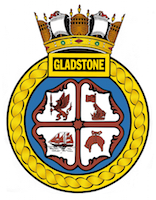
HMAS Gladstone was one of sixty Australian Minesweepers (commonly known as corvettes) built during World War II in Australian shipyards as part of the Commonwealth Government's wartime shipbuilding programme. Twenty were built on Admiralty order but manned and commissioned by the Royal Australian Navy. Thirty six (including Gladstone) were built for the Royal Australian Navy and four for the Royal Indian Navy.
HMAS Gladstone was laid down at Walkers Ltd, Maryborough, Queensland on 4 August 1942. She was launched on 26 November 1942 by Mrs Watson, wife of a long time employee of Walkers Ltd, and was the first RAN warship to carry the name of the city located in the Gladstone region of Queensland, approximately 550km by road north of Brisbane. Gladstone is home to Queensland's largest multi-commodity shipping port.
Gladstone commissioned at Maryborough, Queensland, on 22 March 1943 under the command of Lieutenant John W Penney RANR(S).
Gladstone began her active operational career in April 1943, escorting merchant convoys on the Queensland coast from Brisbane to northern ports and return. At the end of September 1943 she began escorting the first of a series of convoys between the Australian mainland and New Guinea, from Cairns to Port Moresby and Milne Bay. Eight merchant vessels fell victims to Japanese submarine attack during the period of April to September 1943. None of these, however, was under escort by Gladstone.
On 18 December 1943, Gladstone, in company with HMA Ships Gympie (I) and Stawell (I), were escorting convoy TN 192 of eight ships with troops embarked bound for Milne Bay when almost the entire convoy ran aground on Bougainville Reef in the Great Barrier Reef just after 9:30pm that evening. Gladstone had observed Aldis Lamp signals down the convoy and intercepted the word “hit”. Assuming that the convoy was under attack, the ship closed up at action stations, altered course towards the ship thought to be under attack and increased speed. She then prepared to attack with a full pattern of depth charges. Luckily for Gladstone, less than a minute after going to actions stations, she observed the signal “am aground” enabling her to reduce speed and prevent a hard grounding on the reef. As it was, Gladstone made a soft grounding and, thanks to some masterful manoeuvring of the vessel, was refloated 42 minutes later. She navigated her way clear of the reef and waited, in company with Gympie and Stawell, until daylight.
Seven of the eight merchant vessels in the convoy had run aground, SS Charles M Russell being the only exception. The vessels Colorado, Ambrose Bierce and City of Fortworth had all managed to free themselves by dawn and, with HMA Ships Lithgow and Castlemaine arriving to assist and her own starboard propeller damaged, Gladstone detached just after 7:00am to escort the trio back to Cairns. All of the remaining ships were quickly refloated, suffering varying degrees of damage, while Gladstone was forced to return to Brisbane to repair her damaged propeller.
Operational again in January 1944, Gladstone resumed escorting convoys to Milne Bay until March when she proceeded to Adelaide for refit.
On 29 April 1944 she arrived at Milne Bay from Adelaide to begin a tour of duty in New Guinea waters, on escort and anti-submarine patrol duties in the Madang, Langemak, Hollandia and Biak areas. In October 1944 she paid a brief visit to home waters.
In January 1945 Gladstone began operations in the Morotai, Biak and Mios Woendi areas, chiefly on patrol and as a guard ship at Morotai. It was in the main routine and uneventful duty. In May 1945, cooperating with American PT boats, she bombarded Japanese barge concentrations in the Halmaheras.
Following the end of hostilities in August 1945 she proceeded to Darwin. In September she took part in the Timor surrender ceremonies at Koepang. In November and December 1945 Gladstone was employed on general surveillance of the Lesser Sundas and the transport of Netherlands East Indies troops from Darwin to Timor.
On 12 December 1945 Gladstone departed Darwin for Sydney. En route she paid a three day visit to her namesake town on the Queensland coast. On 27 December she reached Sydney, having steamed 98,997 miles since commissioning.
Following a refit in Sydney, Gladstone arrived in Westernport, Victoria, on 23 February 1946, where she attached to Flinders Naval Depot as a training ship. She maintained this role for more than ten years. As a training ship Gladstone steamed 96,645 miles, giving a total of 195,642 miles steamed since commissioning.
Gladstone paid off at Melbourne on 16 July 1956. She was not to be idle for long however, as she was sold to the Port Phillip Pilots' Association. She served as a pilot relief ship for seventeen years under the name Akuna.
The name Akuna commemorated the previous pilot vessel of that name which served from 1925 to 1956. That vessel, formerly HMAS Una, had also been sold to the Port Phillip Pilots' Association after service with the Royal Australian Navy. She was originally the German government vessel Komet, captured by the Royal Australian Navy in October 1914 following the capture of German New Guinea by Australian forces.
In November 1973 press reports stated that Akuna had been bought by a Melbourne businessman, Mr Scot Bevan-Davies, for use as a private yacht. In February 1981 a report was received that Akuna II, as the ship had been renamed, was owned by 'Food for the Hungry International' and was based at Singapore. It was stated that she was engaged in picking up Vietnamese boat people in the Gulf of Thailand and had been doing so for about 18 months.
Note: This video is hosted on YouTube. Department of Defence users will not be able to view this video on the Defence Protected Network.
This cine film has been placed online as part of the Sea Power Centre - Australia’s ongoing archival digitisation program.
Further reading
- The Corvettes: Forgotten Ships of the Royal Australian Navy, by Iris Nesdale - published by the author, October, 1982.
- Corvettes - Little Ships for Big Men, by Frank B Walker - published by Kingfisher Press, NSW, 1996.
- The Australian Centenary History of Defence Volume III, The Royal Australian Navy, edited by David Stevens, Oxford University Press, South Melbourne, Victoria, Australia, 2001.

